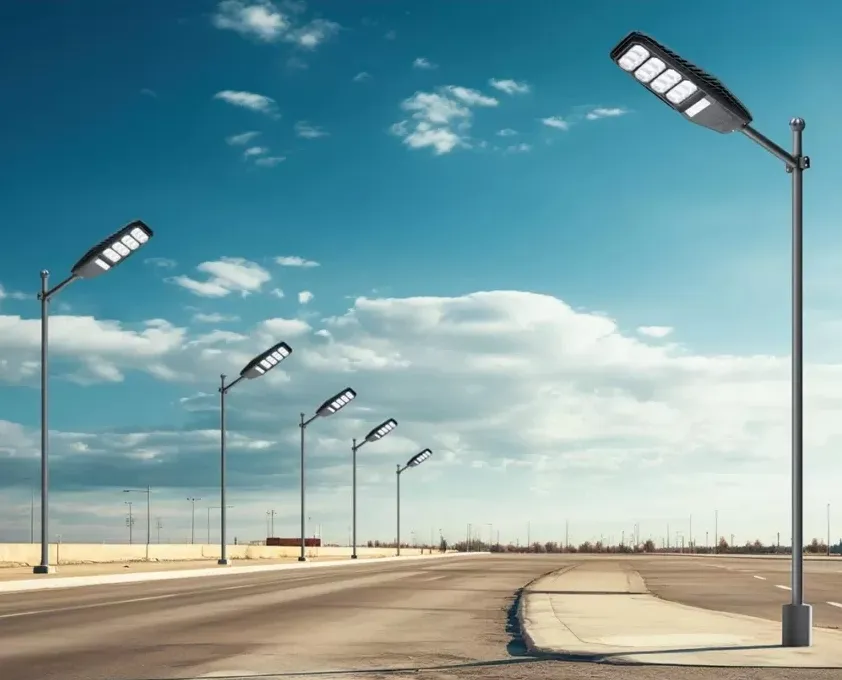As global energy prices rise, cities face increasing pressure to adopt sustainable solutions. Municipalities are turning to solar streetlights as a cost-effective and environmentally friendly alternative to traditional grid lighting. According to the 2024 Global Report, cities that have transitioned to solar streetlights have reduced their municipal energy costs by 63%.
This article explores how solar street light transform urban infrastructure, cutting operating expenses and contributing to a greener future. By examining the latest industry data, cost savings and environmental benefits, we discover why solar street lights are becoming a top choice for thoughtful city planning.
How Solar Street light Technology Reduces Energy Consumption?
Traditional street lights rely on grid electricity, resulting in high energy costs and reliance on fossil fuels. In contrast, solar streetlights use photovoltaic (PV) panels to generate electricity, storing excess energy in lithium-ion or lead-acid batteries for use at night. BARANA’s latest solar streetlight models use high-efficiency LED technology, saving at least 50% of energy consumption over traditional streetlights. In addition, smart sensors and adaptive lighting controls adjust brightness levels based on the movement of pedestrians and vehicles, further optimizing energy use. According to a 2024 study by the Global Urban Planning Organization, municipalities that replaced traditional streetlights with solar systems saw an average energy cost reduction of 63%.
Financial Impact: How Solar Street light Adoption Can Save Cities Millions of Dollars
Switching to solar street lights can significantly reduce municipal electricity bills and operating costs over time. Streetlights account for 30-40% of total energy expenditures in many cities. By switching to off-grid solar streetlights, municipalities can eliminate monthly electricity bills and reduce maintenance costs.
For example, a 2024 case study in Los Angeles showed that replacing 10,000 traditional street lights with solar streetlights would save the city $3.5 million in annual electricity costs. Similarly, in New Delhi, India, the local government reported yearly savings of $2.8 million after deploying solar LED street lights on major roads and public areas. These savings allow cities to reallocate budgets to other public infrastructure projects like schools, healthcare, and transportation improvements.
Reduce Carbon Footprint and Support Sustainable Development Goals
In addition to saving money, solar street lights promote environmental sustainability by reducing carbon emissions associated with electricity production. Traditional street lighting systems rely primarily on coal, natural gas or nuclear power, all producing greenhouse gases. By adopting solar street lights, cities can significantly reduce carbon dioxide emissions and meet global sustainable development goals. A recent UN climate report found that a medium-sized city that replaced 50,000 traditional street lights with solar streetlights could reduce carbon emissions by 20,000 metric tons annually, equivalent to removing 4,300 cars from the road each year. With many governments implementing net zero carbon goals, using solar street lights in cities is a practical and effective step to achieve long-term environmental goals.
Technological advances improve performance and reliability.
Early solar street light models had limitations, including low battery capacity and insufficient lighting power, leading to performance concerns. However, technological advances in 2024 have significantly improved efficiency, reliability and durability.
The latest solar street light systems now feature:
- High-capacity lithium-ion batteries that can store power for three consecutive cloudy days.
- MPPT controllers that increase solar conversion efficiency by 25-30%.
- Durable LED bulbs with more than 50,000 hours of lifespan reduce replacement frequency.
IoT-enabled innovative control systems for remote monitoring and automatic fault detection.
These innovations make solar street lights a reliable, long-term solution for municipalities, ensuring continuous lighting even in extreme weather conditions.
Government incentives and policies
Governments worldwide are accelerating the transition to solar street lights through incentive programs, tax credits, and infrastructure grants. These policies help reduce upfront costs and make solar lighting systems more accessible to municipalities.
For example, in the United States, the federal solar investment tax credit (ITC) provides a 30% tax break for cities that install solar public lighting systems. Similarly, the European Green Deal has allocated €1.5 billion for solar infrastructure projects in EU member states. In addition, China, the world’s largest producer of solar street lights, has launched a subsidized smart city program to encourage widespread adoption in urban and rural areas. These policies ensure that cities worldwide can transition to solar street lights with minimal financial burden.
A clear choice for municipalities worldwide
A 2024 global report confirms that solar street lights can reduce municipal energy costs by 63%, making them an economically and environmentally responsible investment. Cities worldwide benefit from reduced operating expenses, a smaller carbon footprint, and improved lighting efficiency.
With continued technological advancements, government incentives, and the integration of smart cities, solar streetlights will play a central role in shaping energy-efficient urban landscapes. Solar streetlights are a clear choice for cities looking to cut costs and adopt sustainable infrastructure.



